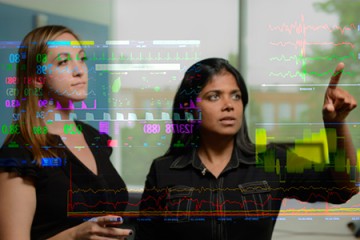Johns Hopkins University today announced the establishment of a new collaborative research effort designed to enhance the efficiency, effectiveness, and consistency of health care.
The Malone Center for Engineering in Healthcare, at the university's Whiting School of Engineering, will bring together engineers, clinicians, and health care providers to focus on three priority areas: data analytics, systems design and analysis, and technology and devices. Clinician-engineering teams will work together to help speed innovation and its impact on society by integrating their research-based advances with practical applications.
Bringing engineers into all aspects of medical practice at Johns Hopkins will "enhance the impact of our already preeminent health sciences enterprises," JHU President Ronald J. Daniels said. "We are breaking down barriers and coming together as one university, dedicated to advancing wholly new approaches to health care."
The center will be established through the support of Whiting School alumnus John C. Malone, who earned a master's degree and doctorate at Johns Hopkins. Malone has also supported the Whiting School with a gift for the construction of Malone Hall, a cutting-edge academic research facility that opened on JHU's Homewood campus in 2014, and a series of professorships associated with the new center. They include the Mandell Bellmore Professorship, named for Malone's PhD adviser at Johns Hopkins. Gregory D. Hager, a professor of computer science, is the inaugural Mandell Bellmore Professor and the center's founding director.
The center aims to spark new collaborations at Johns Hopkins and will also help support research initiatives already taking place, including:
Neurologist and Malone Professor John Krakauer has been leading a team that developed a computer game meant to help stroke patients recover by using their arms to control the movements of a virtual dolphin.
Computer scientist Suchi Saria led work to develop an algorithm that identifies hospital patients at greatest risk of septic shock. Using records of thousands of patients at a Boston hospital, the method was able to predict septic shock before organ dysfunction two-thirds of the time, a 60 percent improvement over existing screening.
Computer scientist Ilya Shpitser, who is being named a John C. Malone Assistant Professor, works on drawing intelligent conclusions from biased data, especially in complex multivariate settings, and then applying the data analysis to problems in health care, medicine, and epidemiology.
Hager said that to be effective, innovation in health care must be a "team sport" involving engineering-clinician teams embedded at the Johns Hopkins schools of Medicine, Nursing, and Public Health.
"More than a decade of working with medical practitioners has taught me that silver bullets in health care innovation are few and far between—we have to build a culture of working together on a continuing and sustained basis to have real impact," Hager said. "The payoffs will be huge. We aim to make Johns Hopkins the national leader for technology innovation in health care."
Added Paul Rothman, dean of the medical faculty: "The relationship between engineering and medicine is woven into the fabric of our schools, and where creative problem solving and a willingness to take risks are prized. It is clear that the juncture of technology and medicine will continue to reshape health care and will have enormous impact on how we diagnose disease, deliver care, and conduct health-related research."
Posted in Health, Science+Technology, University News
Tagged philanthropy, health care, engineering









